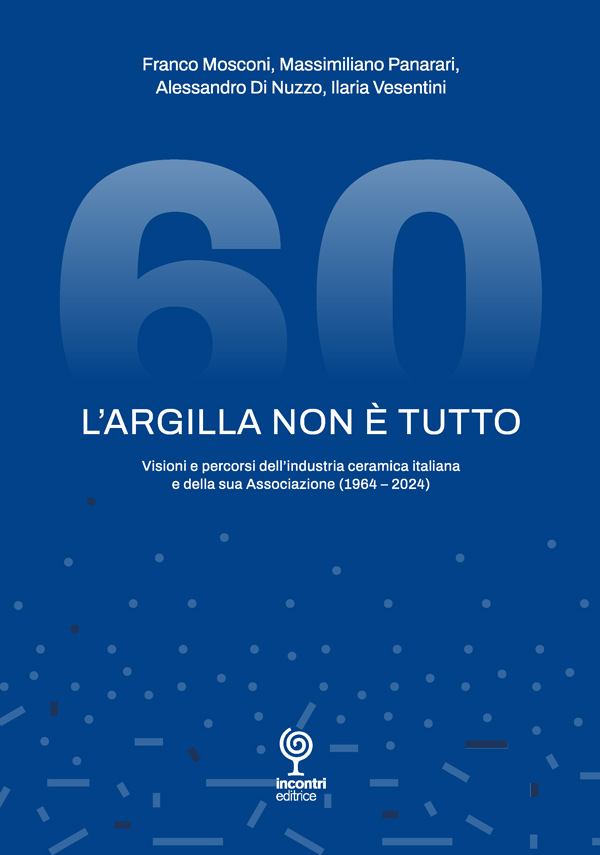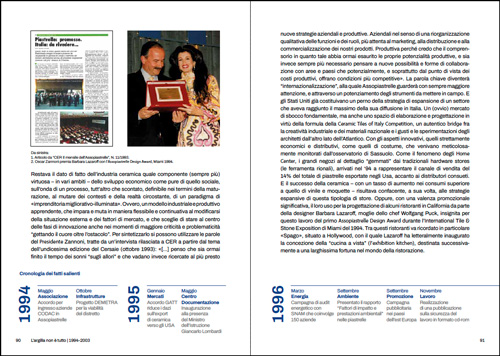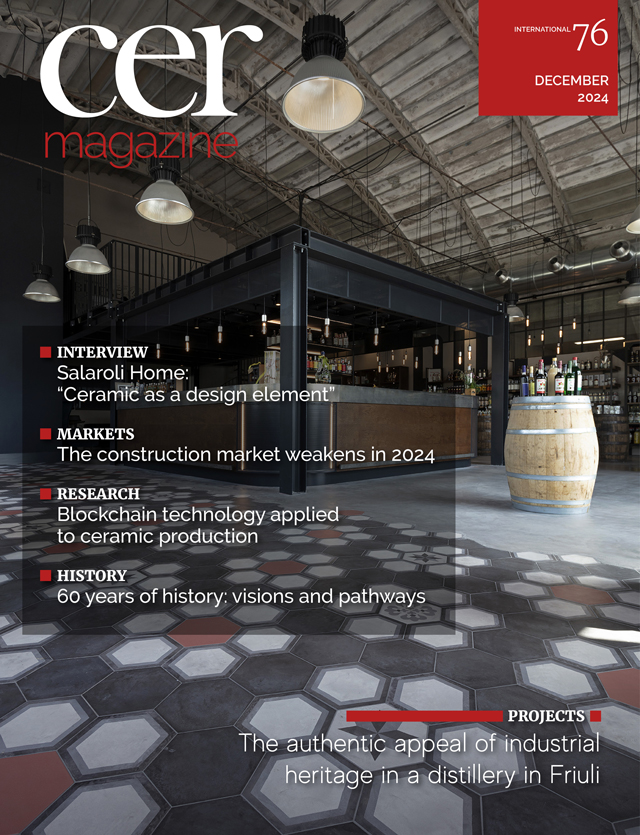The distinguishing factors of Italian ceramics
(December 2024) | The book celebrating the 60th anniversary of Confindustria Ceramica offers a retrospective on key events and achievements in the sector while also serving as a valuable tool for understanding the distinctive qualities that set the Italian ceramic industry apart from its international competitors. These factors have become consolidated over time and continue to define Italian companies, products and the industry as a whole.
Since the 1960s, the Italian ceramic sector has adopted industrial strategies aimed at achieving high production volumes and low unit costs. Its attention to production methods, from process automation to Industry 4.0, has been made possible through continuous technological innovations, all of which originated in Italy. This is hardly a coincidence, considering that Italian ceramic districts are home both to tile manufacturers and to the companies that develop production technologies and services, thereby generating significant economies of scale. The steady stream of investments into the construction and upgrading of production lines has turned this vision into reality.
 In Italian factories, technology goes hand in hand with sustainability. The adoption of cutting-edge Italian production technologies has enabled manufacturers to minimise their environmental footprint. Today, they completely recycle their production waste and have the world’s lowest levels of energy consumption, setting a global benchmark for Best Available Techniques (BATs) while adopting high-efficiency systems such as cogeneration and making extensive use of photovoltaic arrays. This manufacturing excellence goes hand in hand with a strong focus on the workplace and the well-being of the industry’s employees. For years, the industry has implemented prevention protocols, continuous training programmes and both corporate and sector-wide welfare initiatives.
In Italian factories, technology goes hand in hand with sustainability. The adoption of cutting-edge Italian production technologies has enabled manufacturers to minimise their environmental footprint. Today, they completely recycle their production waste and have the world’s lowest levels of energy consumption, setting a global benchmark for Best Available Techniques (BATs) while adopting high-efficiency systems such as cogeneration and making extensive use of photovoltaic arrays. This manufacturing excellence goes hand in hand with a strong focus on the workplace and the well-being of the industry’s employees. For years, the industry has implemented prevention protocols, continuous training programmes and both corporate and sector-wide welfare initiatives.
A third set of distinctive factors concerns the Italian ceramic industry’s attention to product quality and design. The innate Italian taste for beauty in a country that is home to 70% of the world’s cultural heritage fuels a constant search for aesthetic excellence. This is further sustained by organised trend-setting activities that identify subtle signals of emerging styles and transform them into surface trends. This evolution has progressed alongside innovations in product types, all of which originated in Italy: from cottoforte to single-firing, from porcelain stoneware to large slabs. All of this represents the essence of Italian ceramic expertise, the unique ability to transform innovation into practical, market-ready solutions.
 Last but not least, the Italian ceramic tile industry enjoys a truly global presence. Since the 1970s, the industry has expanded its vision, looking first to France and Germany and later the United States, broadening its horizons and cementing Italy’s position as the global trade leader in terms of value with a 29% market share. Since the early 1980s, Italy has actively pursued the internationalisation of both production and distribution structures, establishing a presence in markets with the highest demand for medium to high-end products. This approach enables the industry to compete effectively with local and international players in over 170 markets worldwide. Despite the diversity of these markets, Italian ceramics remains a leader in several key regions – such as the United States and parts of Europe – in terms of market share and consumption.
Last but not least, the Italian ceramic tile industry enjoys a truly global presence. Since the 1970s, the industry has expanded its vision, looking first to France and Germany and later the United States, broadening its horizons and cementing Italy’s position as the global trade leader in terms of value with a 29% market share. Since the early 1980s, Italy has actively pursued the internationalisation of both production and distribution structures, establishing a presence in markets with the highest demand for medium to high-end products. This approach enables the industry to compete effectively with local and international players in over 170 markets worldwide. Despite the diversity of these markets, Italian ceramics remains a leader in several key regions – such as the United States and parts of Europe – in terms of market share and consumption.
The combination of all these factors is unparalleled on the global stage. While ceramics are produced in many parts of the world, nowhere else do innovation, technology, industrial clusters, continuous investment, a passion for beauty, craftsmanship and a strong international presence come together as they do in Italy – and with so much more besides.





